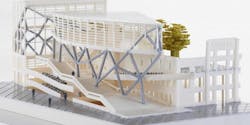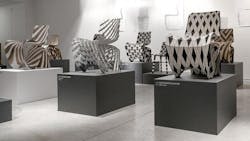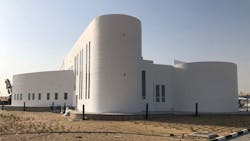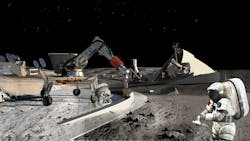How much of an impact will 3D printing have on architecture and the buildings and structures surrounding us over the next 50 years?
Here are some major trends in using 3D printing for the architecture industry that will help determine the answer to that question.
Concept Models
Every architectural project starts with a concept model. It’s a fundamental tool that helps architects, clients and the public visualize the architect’s vision of the design. But the journey from blueprints to physical models is a long, difficult one. It takes a lot of hard work to create a hand-made, detailed and scaled concept model. The task becomes even more difficult when complex geometries are involved.
3D printing will simplify the process. It can render highly detailed physical models from a range of materials and colors based on a CAD model. It is an efficient process that lets architects turn out models quickly and more accurately. It also gives buyers and clients a better idea of what the final building will look like. And if they want any changes, they can suggest some and then quickly see them in a new 3D-printed model. This saves time and money compared to waiting for the building to be nearly finished before realizing it needs some tweaks. No matter the complexity, 3D printing can turn out models in a matter of days.
Interior Design
Interior design has always been challenging and time-consuming for architects. 3D printing will let them create complex furnishings and detailed parts must faster. Smaller decorative items can be prototyped quickly and without wasting expensive materials or human labor. Lately, some builders have begun letting customers pick and choose from a catalog of ready-to-print designs and finishes. The customer’s selections can be customized without additional costs or delivery delays.
The furnishings are 3D printed in-house from recyclable materials rather than shipped. Prices range from $500 to $1,500, similar to current costs. But 3D printing gives customers a wider variety from which to choose without wasting time searching for theming and waiting for them to arrive.
3D Printing Buildings
Constructing an entire building is difficult and involves a lot of people, money, and time. With 3D printing, however, it’s possible to build a structure out of sustainable materials in just a few weeks and for an affordable price. Although many people dismiss this idea as just a far-off dream, a San Francisco company, Apis Cor, has proved it’s possible right now.
The company 3D printed a house from the foundation to roof using a mobile printer that works in polar coordinates. (Windows, wiring and plumbing had to be installed by humans.) It is developing more advanced printers that can build inter-story floors and roofs, as well as horizontal walls and foundation reinforcement.
3D Printing Buildings on Other Worlds
NASA and other institutions are devising ways to use 3D printing to build habitable structures on the Moon or Mars. The general idea is that NASA would send a team of robots to the destination years long before humans arrive. The team would consist of a rover/collector that mines and delivers raw materials; a filament plant that converts raw materials to “filament” for use by the printer; and the mobile printer which converts the filament into various buildings.
This would eliminate the need to send tons of building materials and a host of tools on the long and expensive voyage to the destination. All that would be needed is to send the robots, the CAD plans and perhaps some chemicals for the conversion process. If AI and robotics become advanced enough, maybe human supervisors will be unnecessary. The robots could be monitored and new programs for the robots and the structures uploaded from Earth.
The robotic team would construct houses, labs and storage facilities and human explorers could come months or even years later.
3D printing has many uses in the architecture industry, from building concepts models to building entire structures while saving time and money. It also benefits designers and clients, letting them change the concept model quickly and relatively inexpensively.
Olivia Hooper is executive editor at Pick3DPrinter.




